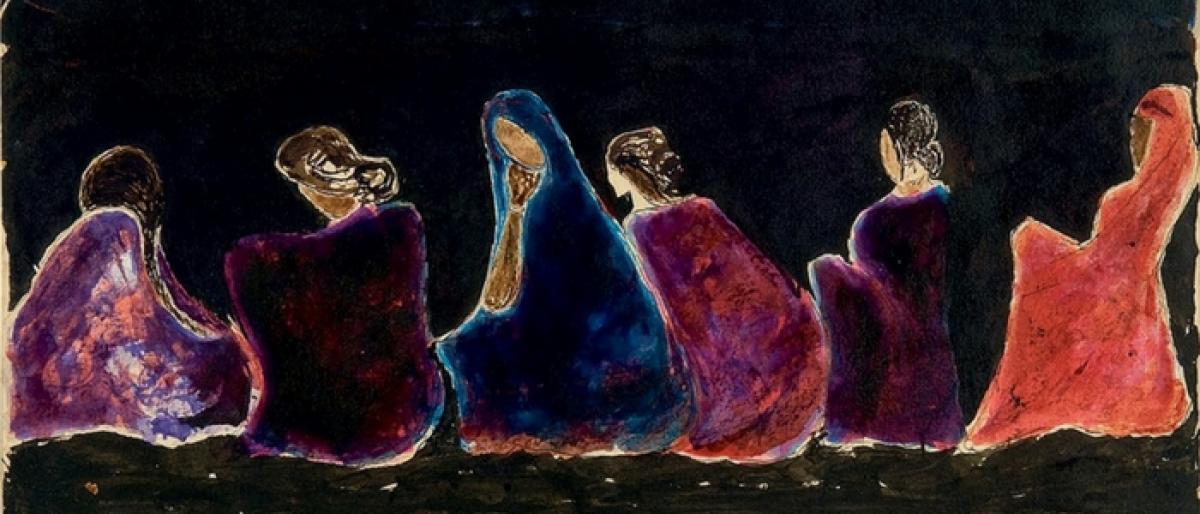The Art of painting

In the beginning of the previous piece we discussed the positive impact the arts have on human beings. It has also been found that the fine arts have, apart from other things, a beneficial effect on the economies of societies, are good for individuals\' mental well-being, and cognitive functioning, creative ability and performance, apart from being able to improve individual health.
In the beginning of the previous piece we discussed the positive impact the arts have on human beings. It has also been found that the fine arts have, apart from other things, a beneficial effect on the economies of societies, are good for individuals' mental well-being, and cognitive functioning, creative ability and performance, apart from being able to improve individual health.
The arts have also been known to improve skills, cultural capital and creativity, apart from increasing social capital and community cohesion. They also maker persons more humane and help them communicate in a different in personal language. They have also been shown to help people overcome shyness, and very rearley cure even severe disabilities such as autism.
I am deliberately desisting from taking the individual names of great artists in various arts not only because, of the apart from the question of the space such an effort will occupy, but also on account of the fact that details about them can easily be obtained from the public domain.
We have seen earlier that there are many other forms of the fine arts. One of them is painting, which is the subject of this week's discussion. Painting is a mode of creative expression and can present itself in various forms including drawing, gestures, composition, narration, or abstraction.
The main purpose of painting is to convey the expressive and conceptual intention of the painter. Painting can be naturalistic and representational, photographic abstract, narrative, symbilistic or political in its form.
Curious as it may seem, rhythm plays an important role in painting, almost to the same extent as it does in the case of music.
"A pause incorporated into a sequence", being the definition which rhythm normally goes, it can play an important and crucial role in many forms of art affecting the aesthetic value of a driven work. If follows that rhythm enhances the quality of good paintings. Needless to say the invention of photography left a telling effect on the art of painting.
There are many reasons why painting is known to have a desirable affect on the well-being of human beings. One of these obviously, is that looking at a painting leaves one with a pleasant feeling quite apart from imparting the painter with a sense of well–being.
As painting is an individual activity, the artist enters his or her own world – a realm full of options. The creative mind, when stimulated, helps in developing a sense of detachment from reality and achieving a state of mental rest that is known to lower stress levels and create a feeling of relaxation and happiness. Thus the pursuit is beneficial to people with known nervous conditions.
Since painting is, at least at the time of creation, a non-competitive activity and is done in a tension – free environment, thus creating a sense of achievement in the artist, heightening his or her sense of individuality and self-esteem – a feeling that is known to create a sense of independence and soothe traumatic feelings.
The very act of painting requiring, as it does, a considerable degree coordination between hand and eye, stimulates the neural connections in the brain and strengthens motor skills. The artist transits into a world of bliss - of purity - a strong sense of concentration helping him or to her experience a sense of detachment - painting from the surroundings, time hardly feeling it go by. By transmitting the energy of the painter into the creation that is being attempted, painting can be carried on for hours together without feeling any fatigue.
On the whole, it is an activity that gives the same benefits to an individual as do prayer, meditation, music or good relationships with other human beings. There have also known to be cases where painters and musicians have been relieveds of pain as painting can act as a palliative for mental illnesses on account of its ability to stimulate brain activity, and is thus is a highly desirable practice for people of all ages whether healthy or ill and a pursuit that can be indulged in a fun - filled environment. And the process, one learns something new and, usually, finishes what has been started!
















